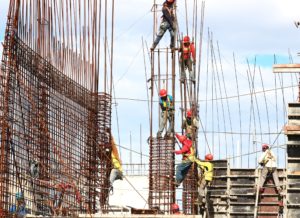You’re about to embark on a major new construction project. If you’re a wise and experienced professional — contractor, architect, or engineer, say — your first thought likely might be: What could go wrong?
That’s a sound starting point. Research a couple of years ago* showed that 75% of construction industry participants had suffered a claim or dispute arising from their role in a project in the prior five years.
In other words, you’re lucky if you can manage to escape those disputes, which cover a whole range of endgames — from rectifying minor issues to facing years-long legal actions.

However, there are several key steps that can strongly mitigate those risks and keep you in the complaints-free 25% zone.
What Causes Construction Defects?
There are, of course, countless sources of defect complaints but nearly all of them fall into one or more of four categories — defects in:
- Design, usually the result of errors, incomplete information, incompetence or negligence.
- Materials, wrongly specified for the type of job, mismatched against specs, or subsequently degraded.
- Workmanship, due to lack of relevant skills, failure to follow design or material documentation, or to adhere to a principle of “standard of care” and use of a “workmanlike manner”.
- Land stability — unsuitability for the type of project.
These are said to be either patent defects (immediately obvious on inspection) or latent defects, which emerge later, usually after completion.
Reducing the Risk of Construction Defects
Taking an enlightened approach now to managing your risk in a project will protect your finances, your reputation, and avoid the long-term distraction of a subsequent complaint.
Here are some of the critical risk mitigation actions you can take:
- Increase your knowledge. Study the outline project proposal, visit and get familiar with the site, and get to know as much as you can about the client and other players, especially relating to any previous defect complaints.
- Ensure you’re familiar with state construction laws and codes. These differ significantly between states.
- Crucially, state laws specify a Statute of Repose — a sort of “Statute of Limitations” which identifies the maximum period within which a defect must be notified. Again, these vary by state, ranging from three years to 20 years. Philadelphia’s Statute of Response is 12 years from substantial completion of a project. In certain circumstances, this can be extended to 14 years. Find a state-by-state list of statutes here.
- Discuss the project with your agent or insurer. In particular, you will want to know if your liability coverage is adequate for the project and your particular role. Again, your liability risk can vary significantly between and within projects, so it’s worth spending time to ensure you’re properly protected.
- Likewise, confirm other participants have adequate coverage. Check certificates of insurance during the pre-qualification phase, and be clear on responsibilities and accountabilities, which should be enshrined in the contract.
- Devise and implement a quality control program. Depending on your role, this may embrace just your specific area (such as design) or the entire project, if you are the main contractor.
10-Point Quality Control Plan
A good quality control procedure for an entire project should include the following elements in a written plan:

- A mission statement that commits to the highest standards, which should be defined, as a minimum, within the civil engineering Standard 01400.
- All participants to agree with and sign on to the plan.
- Establishment of a quality control team, with representatives of all the main participants.
- A regular schedule of team review meetings. A brief daily meeting is probably more effective than a long-winded weekly one. Reviews should include the workability of the plan itself, with amendments made as necessary.
- A site safety plan, which, depending on the scale of the project, could be a separate but linked document.
- A review and verification of the design and materials. This is the time to clarify any issues and seek amplification of proposals. In good risk management, there is no scope for guesswork or assumptions.
- Provision for daily inspections of work and prompt rectification of any patent defects.
- A deficiency log, coordinated by a single, named individual, and recording rectification action taken. Encourage the reporting of defects.
Maintain good, open relationships with clients and sub-contractors to ensure smoother and easier resolutions of dispute. - A skills check for all workers, supplemented by gap training where required. Include safety training here.
Be sure to document everything, but everything, including a regular photographic record, and maintain the records for beyond the period of the Statute of Repose.
What to Do if You Receive a Construction Defect Complaint
Despite your best efforts, you might still receive a complaint about an alleged defect. Make sure you fully understand the complaint, seeking clarification if necessary.
If the defect is patent, confirmed, and easily remediable, agree the solution with the client and fix it. Ensure the corrective action is approved and documented.
If the complaint is more complex, contestable, or emerges latently, notify your insurer and attorney. Don’t accept or admit fault at this stage, since this might affect subsequent litigation.
Litigation of construction defect complaints is often a long and complex process, sometimes lasting years — which is why it’s important to have ensured you have proper liability insurance coverage at the outset.

Talk to Us
The Robertson Insurance and Risk Management team has the expertise and experience to help you develop your project quality control and risk management plan, and to ensure you have the right level of liability coverage for the scale of a project and the scope of your involvement.
Without it, your survivability could be in doubt.
If you need help, advice, or smart-value coverage for construction defect claims, please speak to us.
Disclaimer: This article is provided for information and does not constitute legal advice, for which you should consult a professional.
* SmartMarket Report: Managing Risk in the Construction Industry, 2017